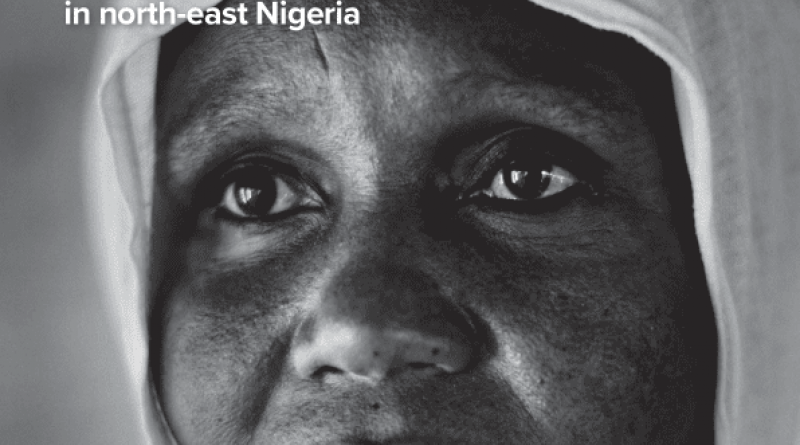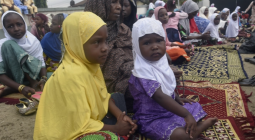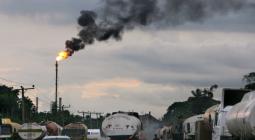Hidden Scars - The Landmine Crisis in north-east Nigeria.

Boko Haram conflict leaves north-east Nigeria facing severe landmine emergency
North-east Nigeria is facing a landmine emergency which is having a devastating impact on people in the region.
As part of the Lifesaving Lessons fundraising campaign, MAG is today releasing the Hidden Scars - The Landmine Crisis in north-east Nigeria report. The report uncovers 1,052 casualties from 697 accidents involving landmines and unexploded bombs between January 2016 and August 2020 including 408 deaths and 644 injuries.
“I have seen first-hand the dangers people face,” says Pierluigi Candier, MAG’s Country Director in Nigeria, based in Maiduguri, in Borno State. “Many displaced Nigerians are in unfamiliar territory and are unaware of the risks. They go out to forage or search for firewood or scrap metal in landmine-contaminated areas with devastating consequences. Children might find something shiny in the ground and take it home to play with their siblings, not knowing it is an unexploded bomb.”
Since March 2018 there has been an average of five such casualties a week in the country – although this number is thought to be higher due to underreporting. The crisis hit a peak of one casualty every day for the first 15 weeks of 2020 (113 casualties were recorded).
Most of the accidents in this period were in Borno State in the country’s conflict-ravaged north-east. Nigeria is now one of the top five countries globally for landmine casualty rates.
The crisis in north-east Nigeria remains one of the largest and most severe humanitarian crises in the world today. Now in its eleventh year, the fighting involving Boko Haram and national and international security forces has become a major regional conflict, increasing in intensity since 2014 and spreading to neighbouring Cameroon, Chad and Niger.
The fighting has left north-east Nigeria contaminated with a range of explosive items including locally-produced landmines, unexploded bombs and improvised explosive devices (IEDs). These pose a significant threat to the lives of people living in or moving through affected areas, as well as to humanitarian workers.
“Barely a day goes by without someone being injured or killed by a landmine or other explosive here,” says Zainab Waziri, Community Liaison Team Leader for MAG in Borno State. “People here have lived in fear for so long, that many children do not know what it is to be safe. And those who flee for their lives are at higher risk as they travel across unknown land in search of safety. Children’s natural curiosity puts them at the greatest risk of all.”
The impact of the crisis on the civilian population has been grave. Tens of thousands of civilians have been killed in Borno, Adamawa and Yobe since 2009, with the deadliest violence taking place in Borno. An estimated 10.6 million people, almost half of them children, are in need of humanitarian assistance.
In Borno State, women, girls and boys continue to be disproportionately impacted by the crisis, making up the vast majority of the crisis population (81 per cent) – with a quarter of those affected being girls and boys under five years of age – and more than 1.5 million people remain internally displaced there.
Attacks on civilians are common. Recently more than 110 farmers were killed in just one suspected Boko Haram attack, which was widely reported around the world, but many attacks do not receive such coverage.
Ibrahim, who works at a camp for displaced people in Gwoza, a town in Borno State, told MAG about a recent well-coordinated and intense attack by Boko Haram close to the camp.
“Rockets and bullets were flying, we all lay on the ground in fear,” he said. “We could hear the insurgents calling out ‘Allahu Akbar’ – it was very frightening – and we have all experienced this before.
“The attacks also mean there are unexploded shells. We are grateful to MAG for helping us learn how to recognise the threat. People find things now and report them to me rather than trying to pick them up.”
As part of its response to the emergency, MAG delivers life-saving risk education sessions which gives people potentially life-saving information on how to recognise, avoid and report threats. These sessions have reached more than 188,000 people over the last two years. MAG also surveys areas contaminated by landmines and unexploded bombs to locate where threats exist.
Falmata Bulamo is a women's representative at a camp for internally displaced people (IDP) camp in Bama, Borno state. Falmata works in partnership with MAG as a focal point for landmine and explosive ordnance reports in the camp and is very supportive of MAG's work.
"It is important work, people often find dangerous explosives and it’s thanks to MAG that they know what is dangerous,” she says. “Just two weeks ago, a woman reported to me that she has found something on a wire near a school three kilometres up the road. I went and looked – from a distance – and saw a milk tin with a wire. I told the military and they dealt with it.”
She adds: "An old woman was out fetching firewood. She found a hollow log with a big bomb inside it. She reported it to the military on the gate and they blew it up. She recognised it because of MAG. The work is good and it saves lives.”
MAG’s report is calling for the landmine crisis to be included as a priority in the broader humanitarian response in Nigeria.
“Despite so many people being killed or injured by landmines in Nigeria, the issue has largely gone under the radar,” says Darren Cormack, MAG’s Chief Executive.
“With the Covid-19 pandemic exacerbating this dire situation, MAG is urgently calling for Nigeria’s landmine crisis to be included as a humanitarian response priority by the international community.”
14 December 2020
relief web




